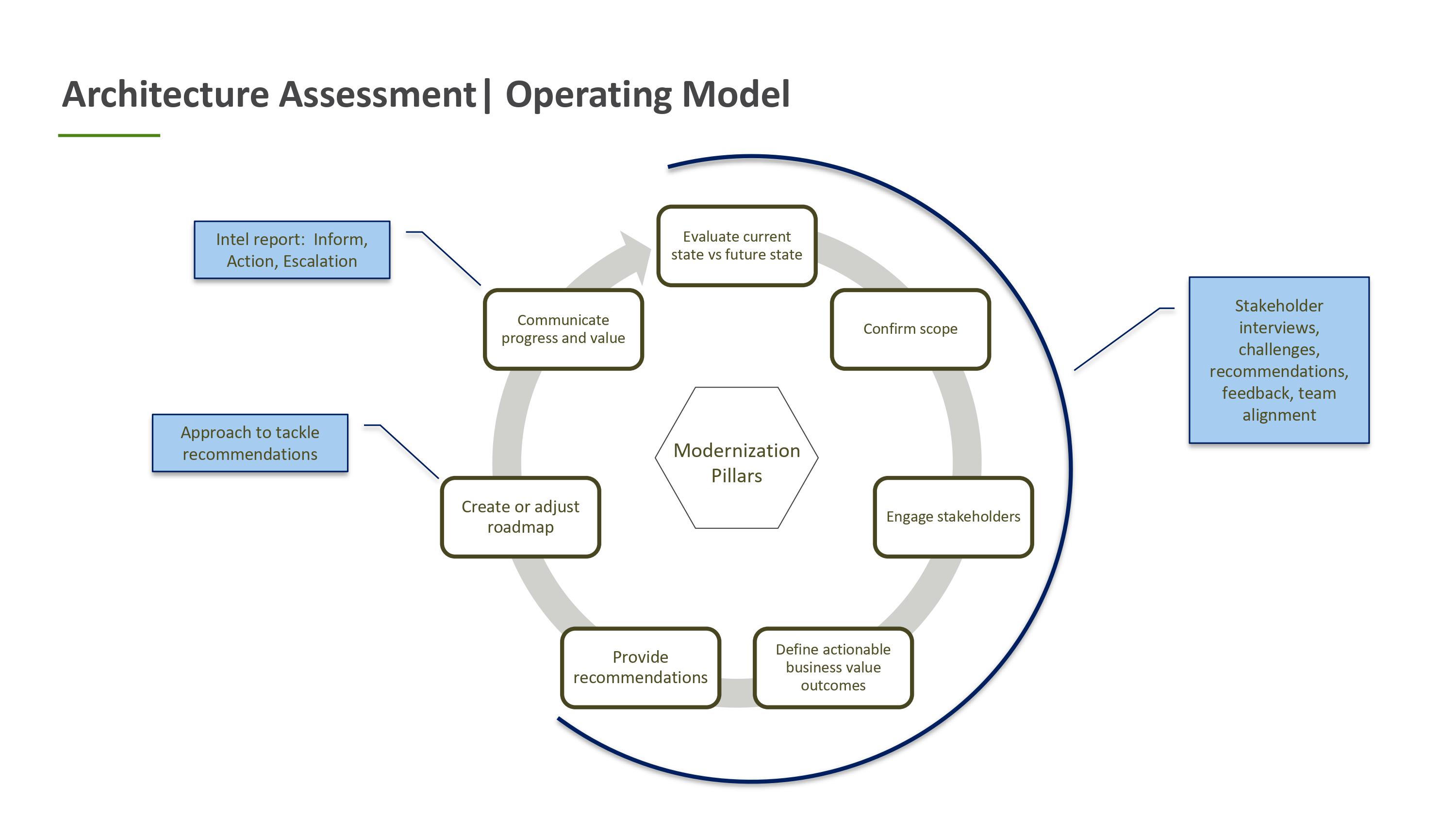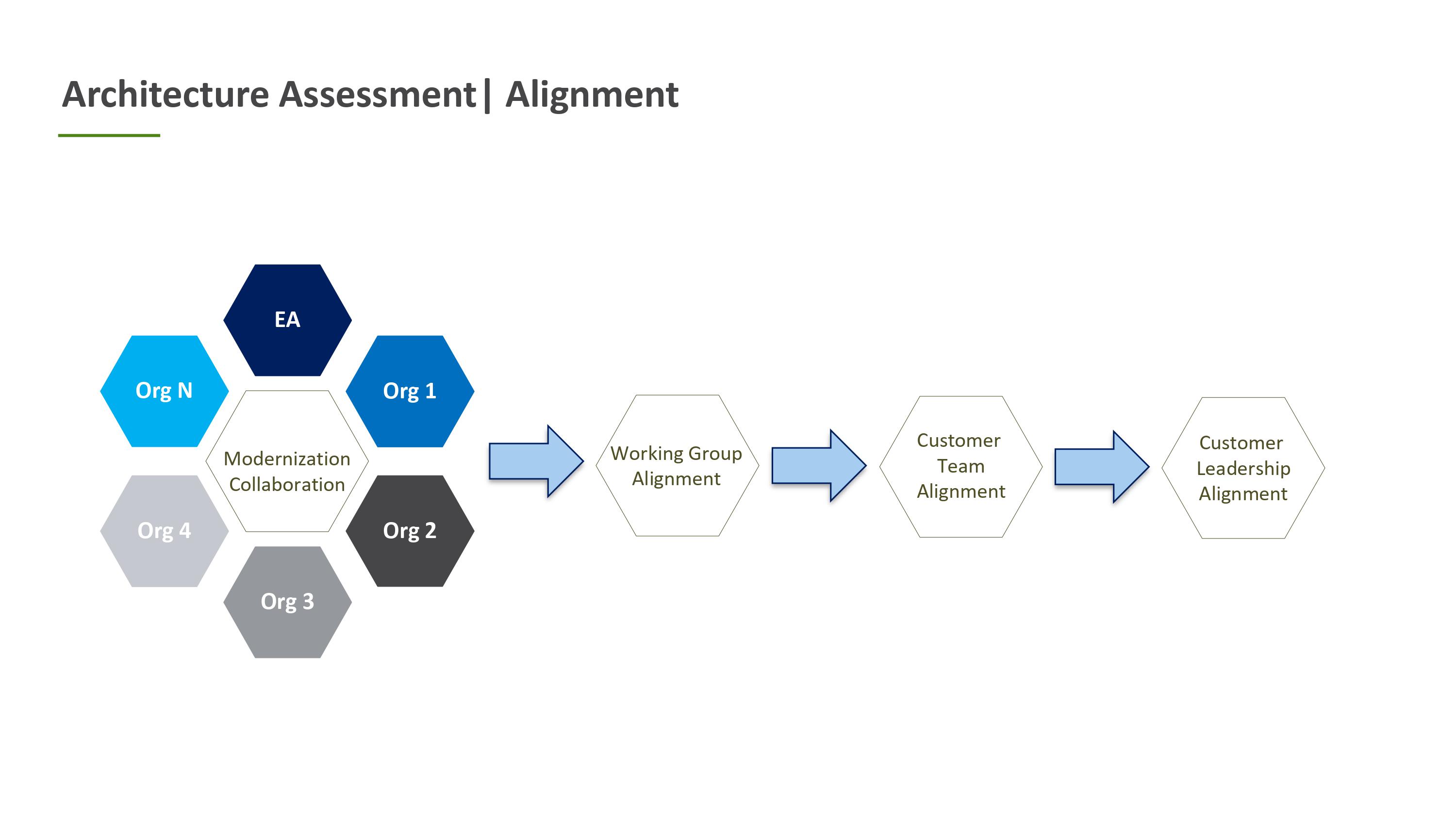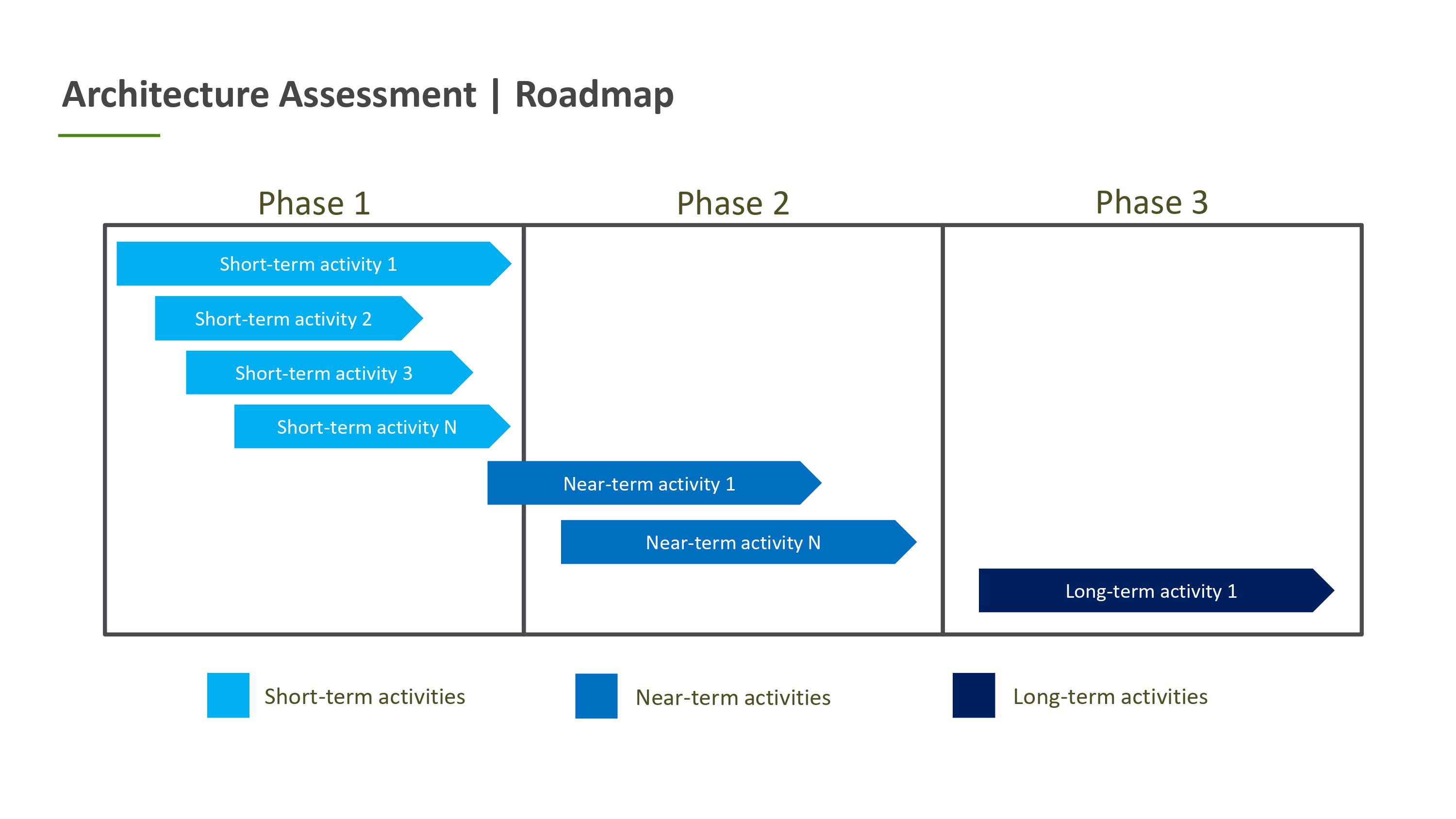Modernizing Architectures and Gaining Alignment
How does one perform an architecture asessment in the context of modernization? Oftentimes this involves assessing current state vs future state, identifying challenges, providing recommendations and gaining alignment. This process is comprised of several key steps in a collaborative way.
Operating Model

First and foremost, there is a need to evaluate the current state, thoroughly examining strengths, weaknesses, and existing capabilities. Following this, it is crucial to confirm the scope of the assessment, clearly defining goals and scope of the modernization journey. Effective engagement with customer stakeholders is paramount, as it allows for gathering of valuable insights, understanding of business requirements, and alignment with organizational objectives.
Subsequently, identifying challenges becomes pivotal, accompanied by the definition of actionable business value outcomes to address these challenges strategically. The next step involves providing recommendations based on any findings, offering practical and tangible steps that should be taken to achieve modernization. To ensure a seamless implementation of these recommendations, a roadmap is created or adjusted, outlining the sequence of activities required for enhancement. Lastly, continuous communication of progress and the realized business value is vital, fostering transparency and garnering support for ongoing improvements. Through this comprehensive process, teams can systematically refine their modernization goals, ensuring alignment with business goals and facilitating a culture of continuous improvement.
Gaining Alignment

Achieving customer alignment involves a stepwise approach. Begin by gaining endorsement from the working group that is undertaking this modernization collaboration. This can be your own team or a hybrid team composed of consultants and customers. Next include peers and leadership, aligning the assessment with any established guiding principles and industry standards. Move on to securing alignment from the wider customer team, as this tactical grassroots alignment will help gather valuable feedback. Next, engage customer leadership, incorporating any feedback from the previous step. Finally, depending on the scope of the modernization and digital transformation journey, it may also be necessary to engage senior and executive leadership, emphasizing tangible business value outcomes and alignment with broader organizational objectives. This cascading alignment ensures a collaborative and iterative approach, enhancing the success of digital transformation.
Roadmap

The roadmap follows a three-phase approach. In the short term, activities focus on conducting a thorough current-state evaluation and engaging stakeholders to define the scope, requirements, painpoints and future state goals. Near-term activities involve identifying challenges, providing actionable recommendations, and gaining alignment from within your own team as well as specific customer teams and leadership. The long-term plan includes the actual implementation of the recommended changes, adjusting the roadmap if necessary, and continuously communicating progress or roadblocks. This phased approach ensures a systematic progression toward modernizing an architecture.
